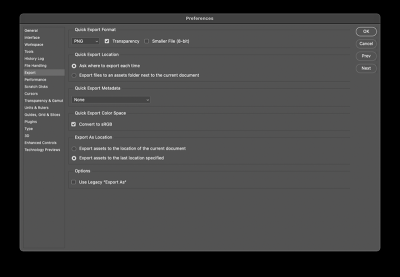Uploading your photos to Shutterstock can be an exciting way to share your creativity and earn money. But what happens if your first submission isn’t accepted, or if you want to update a previously approved photo? Resubmitting is a common part of the process, and understanding how to do it correctly can make all the difference. Whether you’re refining your images or addressing feedback, this guide will walk you through the essential steps so you can confidently resubmit your photos and get closer to earning on Shutterstock.
Understanding Shutterstock’s Submission Guidelines

Before you start resubmitting your photos, it’s crucial to familiarize yourself with Shutterstock’s submission guidelines. These rules ensure that all images meet quality standards and legal requirements, helping your photos get approved faster and avoid unnecessary rejections.
Key aspects of Shutterstock’s guidelines include:
- Image Quality: Photos should be high-resolution, well-lit, and sharply focused. Blurry, pixelated, or poorly exposed images are likely to be rejected.
- Content Restrictions: Avoid images with copyrighted material, recognizable people without model releases, or sensitive subjects like violence or illegal activities.
- Model and Property Releases: If your photo features recognizable individuals or private property, you need the appropriate releases to legally distribute the image.
- Technical Specifications: Follow specific requirements for file formats (usually JPEG), color profiles, and size. Shutterstock typically recommends a minimum of 4 MP resolution.
Understanding these guidelines helps you prepare your images correctly and increases your chances of approval. When resubmitting, double-check your images against these standards to spot and fix any issues that may have caused rejection initially.
Remember, Shutterstock also has specific rules about resubmitting. For example, if your image was rejected for technical reasons, you can usually correct and resubmit. However, if it was rejected for content reasons, you’ll need to address those concerns before trying again. Keeping these guidelines in mind will streamline your resubmission process and help you succeed in sharing your visual stories with the world.
Preparing Your Photo for Resubmission

Before you hit that resubmit button, it’s a good idea to give your photo a little extra attention. Think of it as putting on the finishing touches to make sure it’s as polished as possible. First things first, review Shutterstock’s latest submission guidelines. These can change from time to time, so double-check to ensure your image aligns with their current requirements—like resolution, file size, and legal considerations.
Next, take a close look at your photo. Is it sharp and clear? Are the colors vibrant and true to life? If you notice any issues like blurriness, poor lighting, or distracting elements, consider editing your photo. Simple adjustments such as cropping, brightness, contrast, and color correction can make a big difference. Tools like Adobe Lightroom, Photoshop, or even free options like GIMP can help you enhance your image effectively.
Another important step is to make sure your metadata is accurate and complete. This includes the title, description, keywords, and categories. Be honest and precise—think about what keywords a buyer might use to find your image. Proper metadata not only improves your chances of approval but also increases visibility in search results.
If your image contains recognizable people, trademarks, or copyrighted elements, ensure you have the necessary model releases or permissions. Without these, your image might not be eligible for sale or could be rejected. So, double-check your releases are in order and uploaded along with your image if needed.
Lastly, consider the overall composition. Is your subject well-framed? Does it tell a story or evoke emotion? Sometimes, a minor crop or slight adjustment can turn an okay photo into a standout piece. Remember, quality and originality are key to catching the eye of buyers on Shutterstock.
How to Resubmit a Photo on Shutterstock Platform

Resubmitting a photo on Shutterstock is straightforward, but it’s important to follow the right steps to avoid any issues. First, log into your Contributor account on Shutterstock’s website. Once you’re in, head over to the “Dashboard” where you’ll see your portfolio and submission history.
Locate the photo you want to resubmit. You can do this by navigating to your “My Files” or “Rejected Files” section, depending on where it’s listed. Click on the thumbnail or the title of the image to open its details.
Now, look for the “Resubmit” option. If you don’t see it immediately, check if there’s a link or button labeled “Edit” or “Resubmit”. Shutterstock allows you to update your files and metadata before resubmission, so take your time to make necessary changes.
Here’s a quick rundown of the steps:
- Upload the corrected file: Click on the upload button and select your updated image. Make sure it adheres to all technical specifications.
- Update metadata: Enter new or revised titles, descriptions, and keywords. Be as descriptive and accurate as possible to improve discoverability.
- Add notes (if needed): Some platforms allow you to include notes or comments for reviewers, explaining what has changed or how you’ve addressed previous issues.
- Review everything: Double-check your image and metadata for accuracy and completeness.
- Submit for review: Once satisfied, click the “Submit” or “Resubmit” button. Your image will go back into Shutterstock’s review queue.
After resubmission, keep an eye on your email and dashboard notifications. Shutterstock’s reviewers typically respond within a few days. If your image is accepted, congratulations! If not, review the feedback provided, make additional adjustments if necessary, and resubmit again. Persistence is key, and with each iteration, your chances of success improve.
Common Reasons for Rejection and How to Address Them
If you’ve ever uploaded a photo to Shutterstock and received that dreaded rejection notice, you’re not alone. Rejections can be frustrating, but understanding the common reasons behind them can help you improve your future submissions. Let’s walk through some of the most frequent issues and how to fix them.
Poor Image Quality
Shutterstock has high standards for image quality. Photos that are blurry, noisy, or pixelated often get rejected. To avoid this, always upload images shot in good lighting with a high-resolution camera. Before submitting, check your image for sharpness and clarity, and consider editing it to enhance details and colors.
Incorrect Model or Property Releases
If your photo features recognizable people or private property, you need to have the appropriate releases signed and submitted. Without these, your image will likely be rejected. Make sure to obtain and upload signed releases if applicable, and keep these documents organized for easy access.
Technical Issues
Common technical problems include incorrect file formats, sizes, or color modes. Shutterstock prefers JPEG files in sRGB color space with a minimum of 4 megapixels. Ensure your images meet these specifications before uploading. Use photo editing software to convert or resize your images if needed.
Inappropriate Content
Images that contain offensive, illegal, or sensitive content will be rejected. Shutterstock maintains strict guidelines about acceptable imagery. Review your photo carefully to make sure it complies with their content policies. When in doubt, avoid controversial themes or symbols.
Incorrect or Missing Metadata
Proper titles, descriptions, and keywords are essential for your images to be discoverable. Rejections can happen if metadata is missing, inaccurate, or spammy. Take time to craft descriptive, relevant titles and tags that genuinely reflect what’s in your photo. Use keywords thoughtfully to improve searchability.
Tips for Increasing Your Photo’s Approval Chances
Getting your photos approved on Shutterstock can sometimes feel like a game of chance, but there are concrete steps you can take to tilt the odds in your favor. Here are some practical tips to boost your approval rate:
1. Follow the Technical Guidelines
- Use high-resolution cameras to capture sharp, detailed images.
- Save files in JPEG format with sRGB color profile.
- Ensure images are at least 4 megapixels.
- Avoid heavy compression to prevent artifacts.
2. Focus on Unique and Marketable Content
Browse Shutterstock’s top-selling images and categories to get a sense of what’s in demand. Aim to submit original, high-quality photos that fill gaps in their collection. Think about trending topics, diverse subjects, and fresh perspectives.
3. Pay Attention to Composition and Lighting
Good composition and lighting make your photos stand out. Use the rule of thirds, leading lines, and balanced framing. Natural light often works best, but studio lighting can produce stunning results. Avoid harsh shadows or overexposed highlights.
4. Edit Thoughtfully
Post-processing should enhance your image without overdoing it. Adjust brightness, contrast, and color balance to make your photo pop. Remove any distracting spots or blemishes, but keep the image looking natural. Over-editing can sometimes lead to rejection.
5. Include Relevant Metadata
Write accurate and compelling titles, descriptions, and keywords. Think about what someone might search for when looking for images like yours. Use a mix of broad and specific tags to increase visibility.
6. Review Shutterstock’s Content Policies
Make sure your images comply with Shutterstock’s guidelines on content, model releases, and intellectual property. Staying informed about their policies helps you avoid unnecessary rejections.
7. Submit Consistently and Learn from Feedback
The more you submit, the better you’ll understand what works. Pay attention to any feedback from Shutterstock and adapt your future submissions accordingly. Persistence and continuous learning are key to success.
Remember, every rejection is an opportunity to improve. Keep honing your skills, stay informed about best practices, and you’ll increase your chances of getting your photos accepted and earning on Shutterstock!
Conclusion and Final Tips for Successful Resubmission
Resubmitting a photo on Shutterstock can be a straightforward process when approached with patience and attention to detail. Remember, the key to increasing your chances of acceptance lies in understanding the platform’s guidelines and ensuring your image meets all quality standards. Before resubmitting, review Shutterstock’s submission requirements carefully, focusing on aspects like image resolution, clarity, and relevance.
Here are some final tips to help you succeed:
- Review Feedback Thoroughly: Pay close attention to any comments from reviewers and address all concerns in your resubmission.
- Enhance Your Image: Use editing tools to improve sharpness, correct color issues, or remove unwanted elements.
- Update Metadata: Ensure your keywords, titles, and descriptions are accurate and optimized for search visibility.
- Stay Patient and Persistent: Rejections are part of the process. Learn from feedback and keep trying with improved versions.
Ultimately, success on Shutterstock depends on quality, compliance, and persistence. By carefully following the resubmission process and applying these tips, you increase your chances of having your photos accepted and earning revenue from your creative work. Keep refining your submissions, stay motivated, and you’ll improve your portfolio’s performance over time.

